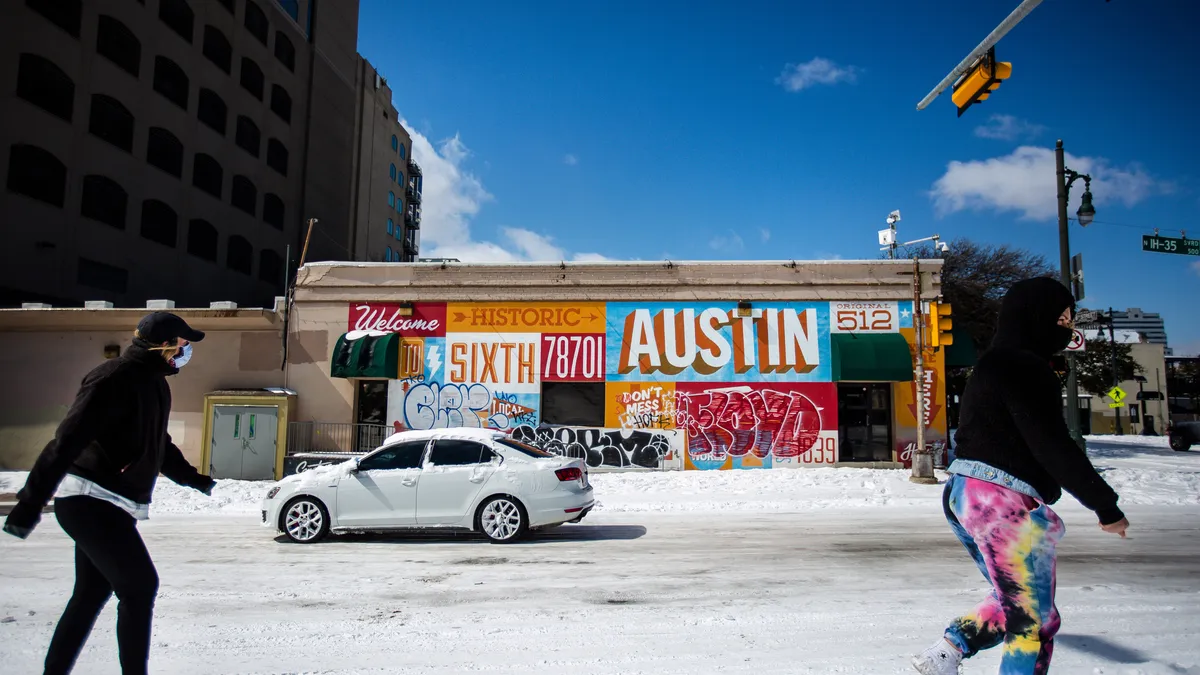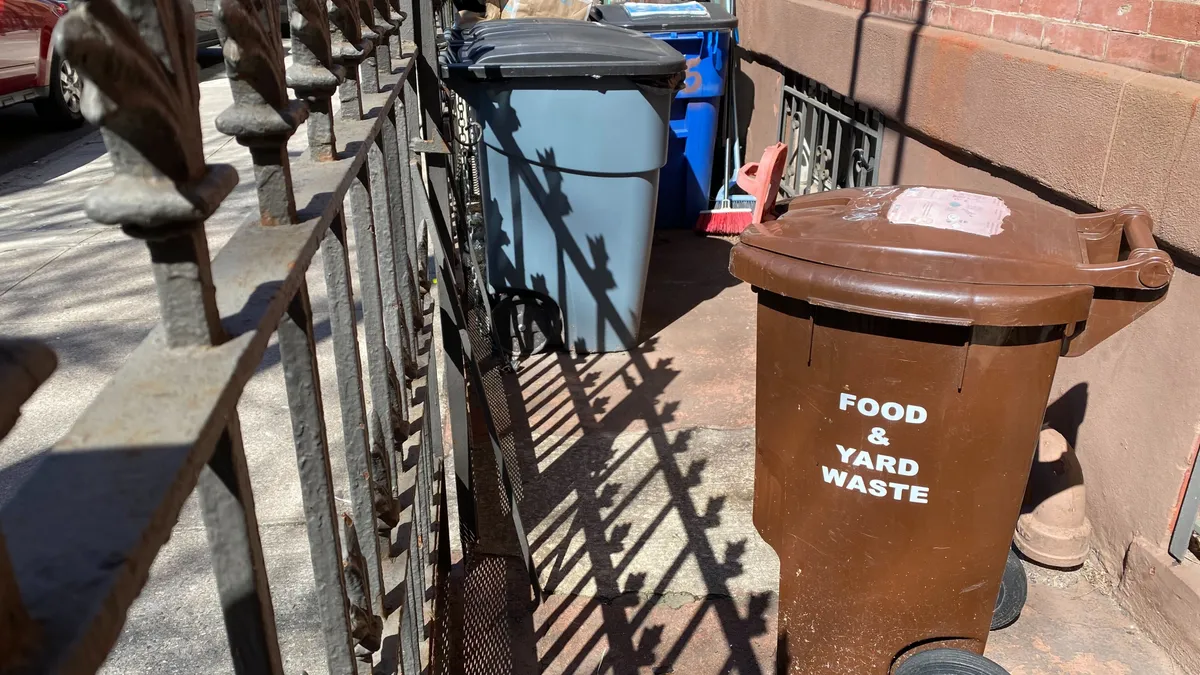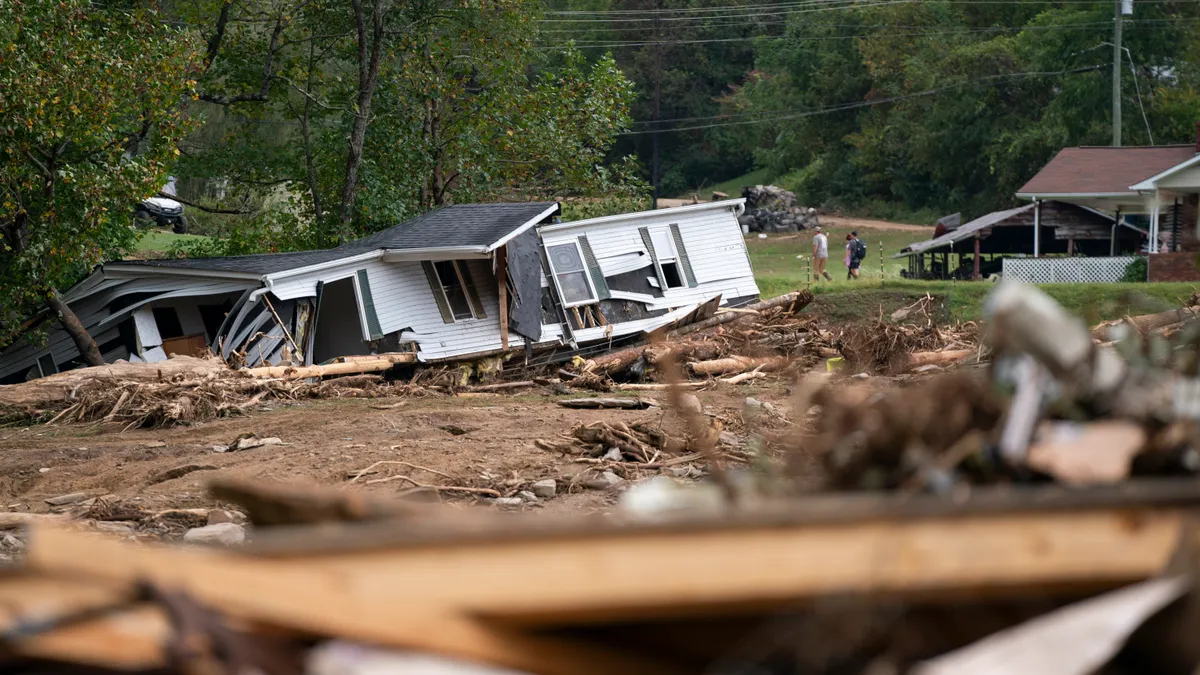Winter Storm Uri — the February 2021 snow and ice storm that slammed Texas and brought energy infrastructure to its knees — played a notable role in the city of Austin's evolving view of resilience work and planning.
"It became clear after Winter Storm Uri that it was really a pivotal moment to look at resilience through different lenses and scales," explained Laura Patiño, who joined the city as its chief resiliency officer in April. That new vision further emphasizes preparedness and the ability to respond in the face of shocks and stresses, with a leader who can touch all city departments.
Patiño began her tenure in Austin after years of serving in resilience roles in Houston, where she helped implement a citywide resilience strategy and climate action plan and worked on the city's recovery from Hurricane Harvey. In Austin, she reports to the city manager's chief of staff and is in the same office as the chief innovation officer, the chief sustainability officer and the chief equity officer.
In the weeks and months to come, Patiño will get to know Austin communities as the city seeks to refine its own definition of resilience.
Nearing a month in the job, Patiño shared her thoughts on the trend of cities establishing "resilience hubs," the potential for a national chief resilience officer and more.
This interview has been edited for clarity and brevity.
SMART CITIES DIVE: What are some of the things that stand out to you most about what Austin is emphasizing?
LAURA PATIÑO: The level of growth and development that Austin is experiencing through economic development at this moment is really exciting, particularly because of the jobs that are being provided for the community. There's a lot to build on, but there's a lot of challenges that are associated with that.
Austin is experiencing more significant weather events and climate change. The impacts of Winter Storm Uri were felt across the city and disproportionately affected the most vulnerable communities. We're coming into the summer, and we're already experiencing heat waves at the beginning of May. And that's something that we have not had to deal with before.
So while these challenges are right in front of us ... there's a lot of strength in the community to be able to work together to resolve these challenges, [to] build off of those existing networks and connections and strengthen the partnership between the community groups that already exist, that are really focusing on building resilience at the individual and neighborhood level. [We are] seeing where the city can come in and complement and support while leading by example in some other ways.
Texas isn't known for being the most aggressive state on climate action. How does that affect what you're able to achieve at the city level?
One thing that I learned from Houston, and that I think applies to any city around the world, is that cities are the boots on the ground. They're the ones feeling the impacts of climate change most directly, but they are also the ones that can drive action locally. When it comes to these solutions, and what is implemented about mitigation and also adaptation, cities can set the example.
It does come with challenges as we think about implementation at different scales. And, of course, we have to work with our state and federal partners as well to ultimately achieve the outcomes to make our communi ties better prepared and more resilient. But I think it's important to understand locally, we need [policies and programs] that enable us to properly invest in our communities in a way that makes them best prepared for the future and allows them to thrive in the face of any disruption or disaster.
What are some of the biggest changes — or emerging trends — you've seen in urban resilience work across the U.S. since you started working in this space?
Now, with the support of the new administration, [resilience is taking priority] at every scale — at the federal scale, at the state level, as well as in regions and cities. Being able to have more partners, including federal agencies, is really transforming this space because it allows us to have a broader reach, more access to resources, shared knowledge, [whereas] before, cities were kind of on their own.
Part of it is how much resilience has been tied to climate. In the early days of resilience taking a space in cities, it was very much focused on climate adaptation and climate disruptions. Over the past few years, we've seen that those are not the only risks and hazards that we face, right? You know, Minneapolis, and what they had to deal with [with the murder of George Floyd and the subsequent racial justice protests], the chief resilience officer there has really taken a role in redefining what resilience means from a social equity standpoint and racial equity standpoint. And in understanding that it's not just about one sector being impacted. It's about how all of these disruptions across different themes can make us more prepared and stronger to withstand whatever may come, whether that is a climate disaster, or whether that is a shooting like we experienced this week in Texas in a school. I think all of those events shape the way that we operate and serve our communities, and having a partner that extends beyond cities is such a significant role.
There was a bill introduced to create a chief resilience officer position at the national level. That really speaks volumes in terms of what ultimately can come from this level of support from the federal government and aligning all the great work that all the agencies are doing to support communities across the U.S. Being able to line up with the definitions and priorities is certainly going to help us get to that next level.
We’ve seen more examples in the news, including in Austin, of cities potentially building resilience hubs. Why are they catching on, and what role might they play?
Definitely resilience hubs are the hot topic right now across cities, and really have, as a concept, been further developed and taken a more central role in the resilience discussions. What I like to say is they are the perfect example of a resilience project: When you look at the building and the facility, it’s intended to be a resilient facility — a facility that doesn’t flood, a facility that has backup power, backup water, and that will withstand any disaster or disruption that it’s designed for.
But that’s only part of the equation. The most important part is the focus on people and what that facility can do to serve people and the community. They are really that extension of how not just the city, but partners and community-based organizations can come together to serve the specific needs of a community and a population, whether that is during a disaster — as a safe place to come to seek refuge, to find information — or just a heating and cooling shelter... all the way to what that facility can serve [as] in blue-sky days, and what services they can provide to this community, tailoring to those specific needs, whether that's education, workforce development, healthcare centers. Models for it look completely different in every city, but also completely different in each neighborhood because the needs of each neighborhood vary.
The reason I think they are [in Austin, such a priority] is, following Winter Storm Uri ... the city realized that there are locations [that] already provide these services, and they're not necessarily city-owned facilities that are providing the services a community needs after the disaster. Often we hear that the community is the first one to respond before the actual EMS or police, fire, emergency management gets to it. And so how are we better equipping Austinites to be able to withstand whatever disruption they may face?




















